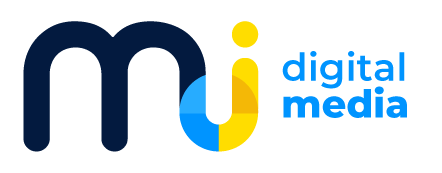This article originally appeared on the FOCUS blog.
Digitalization does not just happen; it needs to be proactively managed. Parallel to the business world’s intensifying desire to “go digital,” the number of tools available for implementing the required changes is growing.
In recent years, countless apps have emerged onto the market, all proclaiming to make life easier for companies and their employees. But which are the right tools? How should they be implemented? And what would a changeover cost? In this blog, four experts give their insights into the digitalization process and reveal how an optimal investment into digitalization would work.
Quality or quantity?
The question of which tools to select varies from company to company and cannot be answered in a generalized way. However, the broader question is this: Would a larger quantity of in-depth, specialized tools be better than a smaller number of generalized solutions that cover corporate requirements less comprehensively?
Uwe Matern, Managing Director of Digitales für Unternehmen, draws the following conclusion: “For mini-teams that do ‘everything’, all-in-one tools are definitely more appropriate. However, if you’ve already hired specialists to complete certain tasks, the ones that best cover their specific requirements should be selected”. In most cases, companies will need to find out what is required on an internal level before investing in new technologies. Too often, firms are taken in by dazzling feature-sets that serve little purpose because they don’t match employees’ needs.
IT expert and consultant Björn Bobach knows that tool chaos should be avoided at all costs: “The more different platforms there are, the harder it becomes to anticipate what will happen in which tool – a horror scenario and a bitter reality for many.” However, Bobach has a simple tip to counter this. He suggests selecting one tool for creating and managing shared documents (such as G Suite or Office 365), one for structuring tasks (such as MeisterTask) and, in large teams, an additional tool for internal communication (such as Slack or Microsoft Teams). Simple enough, but who should actually decide which digital tools to use?
Pulling in the same direction, together
Digitalization may be a newer concept for many entrepreneurs, but its implementation adheres to well-known guidelines. The introduction of new tools should be executed according to a “user first” principle, as it is the tools’ users who will have to live with the software in their daily work.
In order to get to know the needs of employees, many experts advise managers to hold a requirements workshop that, depending on the extent of the transformation required, could last anywhere between a few hours and several months. Berthold Glass, the founder of the Digitization Initiative for the German Economy, is an advocate of the requirements workshop idea. His method is to first ascertain the biggest pain points that users experience with their current system, then to use this feedback to discover how a new tool could improve daily workflows.

During the discussion of these topics, a common theme emerges: “Often, employees on the ground have very different ideas than what their management has in mind,” says Glass. For this reason, it is vital that management, the board of directors, IT experts and the data protection officer should also be at the table from the outset when choosing the right tools. This ensures that the focus is not solely on functionality, but also security, from the very first minute. Choosing the right tools is a collaborative activity.
Short-term costs, long-term profits
Even if they haven’t been heavily involved beforehand, when it comes to calculating the costs for the digital conversion of a company, the management and board of directors will be listening attentively. Exactly how expensive such a conversion will be depends on, among other things, how many employees the company has and how prepared for digitalization it is. The potential scope for costs is vast: “The end total can range from a few thousand euros to millions,” says Markus Dreier, Managing Director of Teamwork Digital.
According to expert estimates, firms should reckon with approximately €50 to €60 ($58 to $70) per employee per month in license costs. While this may seem a heavy price tag, in a targeted transformation accompanied by consultants, it can lead to huge gains in efficiency. The driving ambition should be to establish digital assistants that will relieve your employees of their workload in the long term, thus boosting profitability.
Leaving nothing to chance
Despite the grand aims of digitalization, there are many intermediate steps before a transformation can be considered a success. From a financial perspective, tools should be tested in small teams before they are rolled out to the whole company. This is where external specialists can provide support and increase the speed of introduction, according to Markus Dreier: “This is an activity that is crucial for employee acceptance. At the latest, when the tool is introduced to the entire company, guidelines for use should be issued to ensure everyone is using it in the same way.”

It is also vitally important to onboard users properly, both during the introduction phase and regularly throughout daily business. “An approach à la: ‘Here’s the tool, now go for it’ is incredibly counterproductive,” explains Björn Bobach, “especially with team-oriented software such as MeisterTask.”
All the experts we interviewed agreed on one thing: digital tools should serve the company and its employees, not the other way around. It is important to use the applications in a way that saves time and resources. If you can use automation to relieve your employees in their ‘real’ work, the digital tools you implement may just become their best friends.
This article originally appeared on the FOCUS blog.

